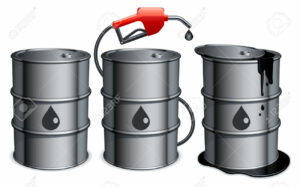Special topics
 Oil prices retreated from 2016 highs on Monday as rising production in the Middle East outweighed a decline in U.S. output and a sliding dollar.
Oil prices retreated from 2016 highs on Monday as rising production in the Middle East outweighed a decline in U.S. output and a sliding dollar.
Crude production by the Organization of the Petroleum Exporting Countries rose in April to 32.64 million barrels per day (bpd), close to the highest level in recent history.
Russia, the biggest exporter outside OPEC, also increased monthly crude for seaborne exports by more than 7 percent to 3.117 million bpd in April.
Brent LCOc1 was trading at $46.77 per barrel at 0840 GMT, down 60 cents from its last settlement. U.S. crude CLc1 was down 40 cents at $45.52 a barrel.
Liquidity was low due to May Day holiday in many countries.
On Friday, the June Brent contract expired at $48.13 a barrel, a 21.5 percent gain over the month that marked the largest monthly advance since May 2009. Earlier in that session it reached $48.50, a six-month high.
The U.S. oil rig count fell for the sixth week last week, which analysts said showed the price of oil had not risen enough to lure shale producers back.
“Despite the price rise, we continue to see a declining rig count,” said Bjarne Schieldrop, chief commodities analyst with SEB Bank in Oslo. “The message from the shale players is that…you don’t need prices to fall more. It’s already doing what it should do in order to rebalance.”
A weaker dollar .DXY, which makes it cheaper for countries using other currencies to import dollar-traded fuel, kept further oil price losses at bay.
The chief of the International Energy Agency (IEA) said oil prices may have bottomed if no major global economic issues emerge.
“In a normal economic environment, we will see the price direction is rather upwards than downwards,” IEA Executive Director Fatih Birol said on Sunday during a G7 meeting of energy ministers in Japan.
Non-OPEC output is set to fall by more than 700,000 bpd this year, the biggest decline in around 20 years, he said.
While Morgan Stanley warned that an emerging gasoline glut threatened refinery demand for crude, Birol said the draw in global stockpiles should start toward the end of the year.
At the G7 meeting, U.S. Energy Secretary Ernest Moniz said U.S. oil production would likely fall 600,000 bpd this year from 2015, when output peaked around 9.6 million bpd.
Source: http://classfmonline.com/1.9027608